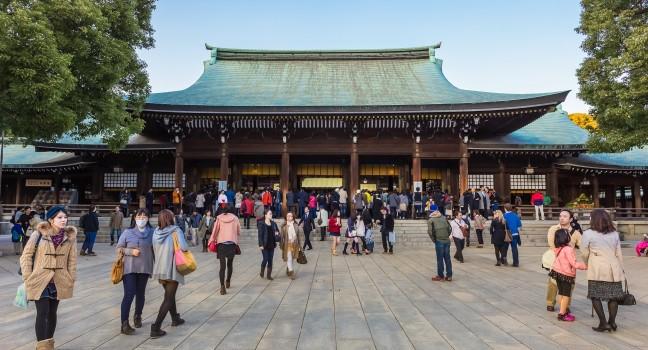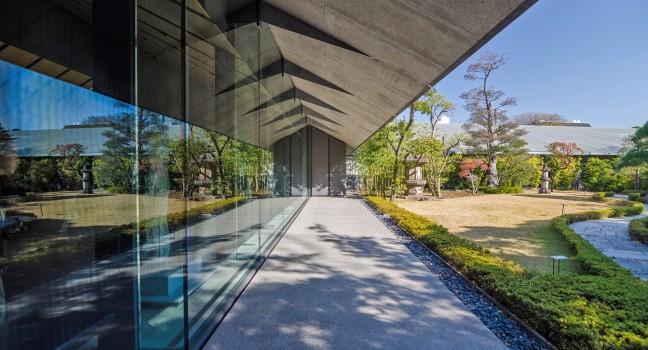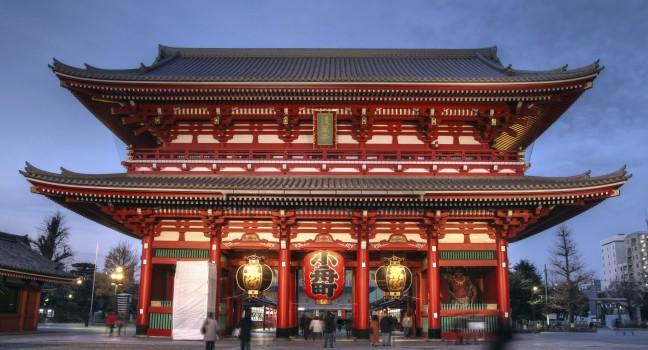When the concrete skyscrapers of Shinjuku become a bit too much, you can escape to the foot of Mt. Takao and the heavily wooded Meiji Memorial Forest Park that surrounds it in about an hour. Hiking along one of the trails that lead to the top of the 599-meter (1,965-foot) mountain, or enjoying the picturesque view from one of the cable cars that zip up to the peak, it can be difficult to believe that you are still within the limits of the Tokyo metropolitan area. The mountain is associated with tengu, one of the best known yokai (monster-spirits) of Japanese folklore. This is also the start of the Tokai Nature Trail, which leads all the way to Osaka. The mountain is home to a temple, a monkey zoo, a botanical garden, and a beer hall, but it if you make an early start, it is possible to take in everything in one day, and be back to central Tokyo by nightfall.
The Mt. Takao climb is not nearly as grueling as that of Mt. Fuji, but proper planning is necessary to ensure a safe and pleasant hike. If you intend to take the cable car or the paved trail, wear comfortable sneakers. The unpaved trails, on the other hand, can get quite slippery and hiking boots are essential. It is also a good idea to bring a raincoat in case of sudden showers. The heavily wooded mountain can expose you to extremes of humidity, sunshine, and wind, so dress in layers. Bring plenty of bottled water—there is no running water anywhere on the mountain. Although there are overpriced vending machines and food stalls, your best bet is to pack a lunch. It is mountain-climbing etiquette in Japan to greet people you overtake on the way up or meet coming the opposite direction. Smile and say "konnichiwa." On weekends, the mountain gets unpleasantly overcrowded. On weekdays there are still plenty of hikers but it is a pleasant hike regardless.
By far the most popular way to get to the top of Mt. Takao, Trail 1 starts at Kiyotaka Station, the base station of the cable car, and takes a fairly direct, paved route to the visitor center at the top (3.8 km [2.4 miles], approximately 1 hour, 40 minutes). The descent is especially stunning at sunset. If you take the cable car, you'll join this trail a third of the way up. Near the start of Trail 1 is a detour to konpira-dai, one of several small shrines on the mountain, where there is a clear view of central Tokyo. After returning to Trail 1, continue along as you pass Sanjo Station (the upper station of the chairlift) and Takaosan Station (the cable-car terminal), and you will come to tenbodai, an observatory with another view of the Tokyo skyline. If you continue on the trail, pass through Joshinmon Gate and on toward the peak. Or, you detour to Trail 2, a loop (900 yards, 30 minutes) that meets back up with Trail 1 farther up the mountain. Going right on Trail 2 will take you past the hebitaki, a picturesque natural waterfall. Going to the left will take you past the Monkey Zoo and Botanical Garden. The Botanical Garden features wild plants indigenous to the area with explanations mainly in Japanese, and the zoo is home to a few dozen clever monkeys, also native to the mountain (¥400 for entrance to both). If you skip Trail 2 and continue on Trail 1, the next stop is at the octopus cedar, a tree with exposed roots so fantastical, they resemble a giant sea monster. At this point, you will reach the Joshinmon Gate. Continue to the busharito, a stone pagoda that literally means "Buddha's bone," and is said to mark one of the spots where pieces of Buddha's remains were spread around the world after his cremation. Just past this is Yakuoin Temple, dedicated to Yakushi Nyorai, the Buddha of Medicine, believed to be built in 744. The 2,500 historical documents surviving in the temple explain Japanese religious beliefs during the Warring States (mid-1400s–1603) and Edo (1603–1868) periods. Trail 1 then continues on to the visitor center at the peak, passing beech, oak, and Japanese nutmeg trees along the way.






